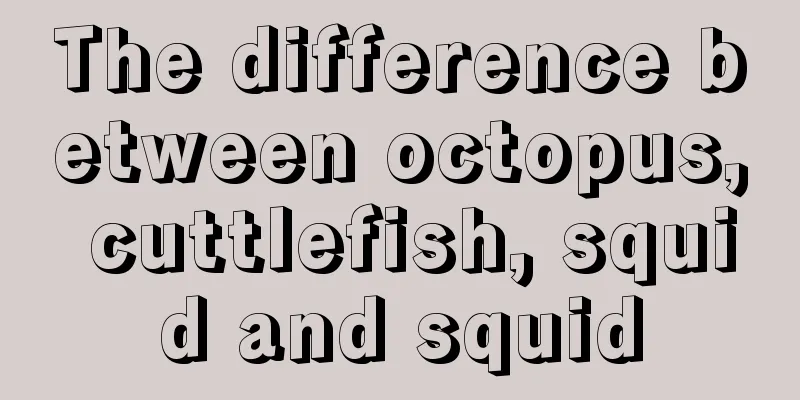The nail of the little toe is divided into two halves

|
Many people's fingernails are trimmed to look beautiful, but toenails are often neglected, and even the health of toenails is ignored. Toenails are generally thick and hard, and it takes extra effort to even cut them. The little toe nail is the smallest, so what should you do when you find that the little toe nail is split in two? The following is a detailed introduction. This little toenail is very mysterious in terms of anthropology and anthropology. Recently, a rumor has gone viral on Weibo: Only Han people with pure blood have toenails divided into two parts, with the outer part being smaller. This caused netizens to take off their socks and look at her feet. Some were proud of her "pure bloodline", while others were amazed by her "exotic look". Take off your socks and check your nails. The person’s toenails are divided into two parts. His ancestors came from the Big Locust Tree in Hongdong, Shanxi. This is a widely circulated saying among the people. According to legend, more than 600 years ago, Zhu Yuanzhang came to power and due to the population decline caused by war, he decided to migrate the people of Shanxi, who had a larger population at the time, southward. The immigrants arrived under the big locust tree in Hongdong County. They were reluctant to leave their homeland, so the soldiers cut a cut on the toenail of each of them, saying that they would return to their roots in the future, and anyone with a cracked or split toenail was a relative. Today, the big locust tree in Hongdong has been built into a tourist attraction for recognizing relatives, but this seemingly absurd legend has actually been proven by scholars. In 2005, Associate Professor Bian Jianchao, who was then working at the School of Public Health of Fudan University, led graduate students Hao Weiguo and others to conduct research on the genetics of petal-shaped nails based on the legend of the big locust tree in Hongdong County. The survey started from Hongdong County, Shanxi Province, and went southeast, passing through several provinces with the largest number and frequency of Shanxi immigrants in history, until it reached Fujian Province, which has little to do with Shanxi immigrants in historical records. Bian Jianchao and his students selected a village in each of the seven provinces of Shaanxi, Shanxi, Henan, Jiangsu, Zhejiang, Jiangxi and Fujian where there had been no record of large-scale population migration in the past century, and counted the number of people with petal-shaped nails. The final conclusion is: from south to north, the closer to Shanxi and Shaanxi regions, the greater the probability of petal-shaped nails (see the table on the lower left for specific data). The investigators analyzed that flap-shaped nails are a heritable trait and are not related to gender. Some people do not have lobed nails at birth. The earliest one appears at the age of 1, and the latest one appears after the age of 5. Not all children born to parents with lobed nails have lobed nails. If one of the parents has lobed nails, some of the children may have lobed nails while others may not. "The direction of immigration during the Ming Dynasty, from Shanxi and Shaanxi, through the Central Plains, to the southeast, has a certain regular overlap with the distribution of the petal-nay population. We speculate that the genetic trait of petal-nay may be a physiological trait of the Chinese nation 5,000 years ago, or it may be the result of the integration of other ethnic groups, but it is difficult to verify which ethnic group it is unique to," said Hao Weiguo. There is also a theory that the split toenail was caused by a genetic mutation of early ancestors, and another theory is that it is unique to the Mongolian race, which sounds quite "academic". According to the traditional classification, there are three major races in the world: Caucasians (white race), Mongolians (yellow race), and Negroes (black race). In physical anthropology, the physical signs of the yellow race are: yellow skin, black hair, Mongolian folds at the corners of the eyes, shovel-shaped incisors, low nose bridge, brown eyeballs, and sparse body hair. Liu Zhaohui, executive director of the Institute of Anthropology at Zhejiang University, and Chen Hua, associate professor at the School of Sociology and Anthropology at Sun Yat-sen University, both said that research on the physical characteristics of different races generally considers external signs such as hair color, hairstyle, eye color, skin color, facial flatness, nose shape, lip thickness, head shape, and height, and they have never heard of the yellow race having petal-shaped nails. "There is no such thing as toenails in the racial classification criteria." As to whether Caucasians and Negroids also have petal-shaped nails, there is no research on this in China at present, so we have no way of knowing. "In life, we find phenomena with high probability. They are not obtained through experiments and cannot represent the unique laws of a certain race," said Liu Zhaohui. So what are the obvious characteristics of the Mongoloid race? "The blue birthmarks on the buttocks of Asian infants and young children are scientifically called Mongolian spots. They are a genetic trait of the yellow race, and this conclusion was drawn after experimental data measurement and classification," said Associate Professor Chen Hua. |
<<: What are the dangers of applying nail polish
>>: Tips to get rid of dark circles
Recommend
What to do if scars are left after mole removal
Many people will remove moles, which are obvious ...
What are the main reasons for the yellowing of the whole body in the late stage of liver cancer?
What are the main causes of yellowing of the whol...
What should I do if my clothes absorb hair?
In people's daily life, whether their image i...
What are the functions and effects of propolis drops?
Propolis is a colloidal solid with an aromatic sm...
What are the causes of lung cancer? Three high-level factors that induce lung cancer that you must know
In order to better prevent lung cancer, a respira...
How to judge whether flat warts are getting better and what to pay attention to
When treating flat warts, if the condition improv...
My scalp always feels like bugs are crawling on it
We all know that many people want to have black a...
The difference between overglaze and underglaze colors
Nowadays, many people have ceramic ornaments in t...
How to dry rose buds
When many people mention roses, they think of the...
Is the quality of pregnancy high through ejaculation outside the body?
The so-called "extracorporeal ejaculation&qu...
Don't easily suspect that you have colon cancer
Don't easily suspect that you have colon canc...
Find out if stomach cancer is contagious
Is gastric cancer contagious? I believe this is a...
Which lotion is good for moisturizing
Lotion is a necessity for our daily skin care. It...
Is transaminase 41 serious?
The increase in transaminase is due to damage to ...
How to treat liver cancer
Liver cancer patients generally have a hot consti...









